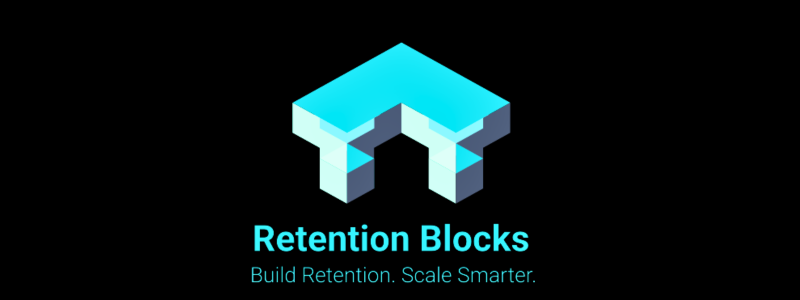Why Customer Success Is the Heartbeat of Business Growth

In today’s competitive business landscape, acquiring new customers is just the beginning. The real challenge — and opportunity — lies in what happens after the sale. This is where Customer Success enters as the unsung hero of sustainable business growth.
Why Customer Success Matters More Than Ever:
Think of Customer Success as the organizational commitment to ensuring your customers achieve their desired outcomes while using your product or service. It’s the difference between a one-time transaction and a lasting partnership that fuels mutual growth.
When executed well, Customer Success delivers three fundamental benefits that directly impact your bottom line:
1. It Dramatically Reduces Customer Churn
Customer churn — the rate at which businesses lose customers — can be the silent killer of recurring revenue models. Even a small percentage increase in retention can significantly boost profitability.
But churn is about more than just lost revenue:
- Each departed customer represents a potential advocate for your competitors
- Negative experiences spread rapidly through professional networks
- The ripple effects damage your brand’s reputation in ways metrics can’t fully capture
The most effective Customer Success teams develop what I call a “relationship-first mindset.” They build such a deep understanding of their customers that they can sense potential disengagement before it appears in any dashboard. They recognize subtle shifts in communication patterns, engagement levels, or conversation tone that signal when something isn’t right.
It’s important to note that Customer Success isn’t magic — it can’t compensate for fundamental product flaws or misalignment with market needs. However, when your core offering delivers value, a strong CS approach ensures customers fully realize and appreciate that value.
2. It Creates Natural Pathways for Revenue Expansion
Growing revenue from existing customers is substantially more cost-effective than acquiring new ones. There are no marketing acquisition costs, sales cycles are typically shorter, and conversion rates higher.
What makes Customer Success so powerful for expansion is that it transforms the traditional upsell dynamic:
- Instead of pushing products, CS teams identify genuine opportunities to solve evolving customer challenges
- Recommendations emerge organically from ongoing strategic conversations
- Customers perceive expansion suggestions as valuable advice rather than sales tactics
When customers view your team as trusted advisors genuinely invested in their outcomes, they become naturally receptive to deepening the relationship. The expansion conversation shifts from “Would you buy more?” to “Here’s how we can help you achieve even better results.”
3. It Elevates the Entire Customer Experience
Perhaps the most transformative aspect of Customer Success is how it fundamentally shifts your organization’s relationship with customers:
Customer Success embeds customer-centricity into your company’s DNA. Rather than being confined to support interactions, the customer’s perspective influences every decision across departments. Engineering, product, marketing, and sales all begin asking: “How does this impact our customers’ ability to succeed?”
The relationship evolves from transactional to consultative. Your team transitions from problem-solvers to strategic partners who understand the customer’s business context and help them achieve meaningful objectives.
Most importantly, Customer Success flips the script from reactive to proactive value creation. Instead of waiting for customers to report issues, you’re continuously identifying opportunities to deliver unexpected value — preventing problems before they impact satisfaction.
The Transformative Power of Customer Success:
When implemented thoughtfully, Customer Success becomes more than a department — it becomes a philosophy that permeates your entire organization. It creates a virtuous cycle where deeper customer relationships lead to better product insights, more tailored solutions, increased loyalty, and sustainable growth.
In a world where products and services are increasingly commoditized, your ability to help customers succeed becomes your most powerful differentiator. It’s no exaggeration to say that in today’s business environment, Customer Success isn’t just a nice-to-have — it’s the very heartbeat of sustainable growth.
What is Customer Success?
Customer Success is a proactive business strategy focused on ensuring customers achieve their desired outcomes while using your product or service. Unlike traditional customer support, which primarily reacts to problems after they occur, Customer Success takes a forward-thinking approach aimed at delivering ongoing value.
Beyond Traditional Customer Support:
- Customer Support waits for customers to report issues, then works to resolve them
- Customer Success anticipates needs, identifies potential challenges before they arise, and actively guides customers toward their goals
The Essential Qualities of Effective Customer Success:
Proactive Engagement
Rather than waiting for customers to raise their hands, successful CS teams leverage data to identify which customers need attention — whether they’re struggling or primed for growth opportunities.
Analytics-Driven Approach
Customer Success relies on forward-looking predictive analytics to prioritize opportunities and allocate resources effectively. This data-informed strategy ensures teams focus on the highest-impact activities.
Predictive Problem-Solving
The most advanced CS organizations can anticipate customer needs before customers themselves recognize them, creating a seamless experience that prevents problems rather than just solving them.
The Strategic Goal: Outcome Achievement
The primary mission of Customer Success — ensuring customers achieve their desired outcomes — requires a deeper understanding of customer objectives:
- Uncovering True Objectives: Customers don’t buy products for features; they buy them for results. CS teams must discover what success truly looks like for each customer.
- Strategic Success Planning: Working collaboratively to define measurable success metrics and creating clear roadmaps to achieve them.
- Value Demonstration: Helping customers recognize when they’ve achieved their intended results and quantifying that value in business terms that matter to them.
- Evolving Partnership: As customer needs mature, continuously redefining success criteria to maintain alignment and relevance.
By focusing on outcomes rather than simply product usage, Customer Success transforms transactional relationships into strategic partnerships. Your product becomes the means to an end rather than the end itself.
When customers consistently achieve meaningful outcomes, they become advocates, references, and long-term partners — driving sustainable growth that far exceeds what acquisition alone can achieve.
Core Pillars of Customer Success
- Onboarding Excellence
- Customer Adoption
- Customer Retention
- Customer Expansion (Upselling & Cross-Selling)
- Customer Advocacy
1. Onboarding:
Onboarding is the process of welcoming new customers and helping them understand how to use your product or service effectively. It’s the customer’s first real interaction after purchasing, so making a great impression is crucial.
Why it’s important:
A smooth onboarding experience reduces confusion, increases product adoption, and helps customers see value quickly — leading to higher satisfaction and long-term loyalty.
How to do it well:
- Provide a clear, step-by-step guide or tutorial.
- Offer personalized onboarding sessions for complex products.
- Use automated check-ins (e.g., emails or in-app prompts) to guide users through key features.
- Set clear goals — what does success look like for the customer?
2. Adoption:
Adoption is about ensuring customers actively use and benefit from your product or service. It’s not just about learning how to use it — it’s about making it part of their daily processes.
Why it’s important:
If customers don’t use your product regularly, they won’t see its value — leading to dissatisfaction and eventually canceling their subscription (churn).
How to do it well:
- Identify and highlight “aha moments” (where the customer realizes the product’s value).
- Offer training resources (e.g., webinars, help centers, knowledge bases).
- Monitor usage data — if a customer is not using a feature, follow up with helpful tips.
- Personalize communication based on customer needs and goals.
3. Retention:
Retention focuses on keeping your existing customers satisfied so they continue using your product or service over time. It’s about building long-term relationships and ensuring they renew or keep buying from you.
Why it’s important:
Acquiring a new customer is 5x more expensive than retaining an existing one. Strong retention reduces customer churn and increases lifetime value.
How to do it well:
- Proactively check in with customers to resolve issues before they escalate.
- Provide ongoing value through product updates, exclusive offers, or educational content.
- Implement loyalty programs or incentives for long-term customers.
- Regularly collect and act on customer feedback.
4. Expansion:
Expansion is about growing your relationship with existing customers by offering them additional products, services, or upgrades (upselling and cross-selling).
Why it’s important:
Happy customers are more likely to buy more from you. Increasing revenue from your existing customers is often easier (and cheaper) than acquiring new ones.
How to do it well:
- Identify customer needs through regular conversations and data analysis.
- Introduce advanced features or premium tiers when customers are ready.
- Offer add-ons that complement what they’re already using.
- Time your offers — don’t push upgrades too early; wait until they see the value of the current product.
5. Advocacy:
Advocacy is about turning satisfied customers into loyal brand champions who share positive experiences, refer others, and promote your product.
Why it’s important:
Word-of-mouth marketing is powerful — people trust recommendations from other people more than advertising. Advocacy drives organic growth and builds your reputation.
How to do it well:
- Create a referral program that rewards customers for bringing in new users.
- Share customer success stories through case studies or testimonials.
- Recognize and engage with your most loyal customers (e.g., VIP groups).
- Make it easy for customers to leave reviews and share positive feedback.
Conclusion
In a rapidly evolving business landscape, Customer Success is no longer just a support function — it is the cornerstone of sustainable growth and competitive differentiation. By focusing on proactive engagement, understanding customer objectives, and delivering continuous value, businesses can transform transactional relationships into long-term partnerships. The result is not only increased customer satisfaction and loyalty but also a significant boost in revenue through retention and expansion.
When Customer Success becomes a company-wide philosophy, it creates a ripple effect that touches every part of the business — from product development to marketing and sales. By prioritizing your customers’ success, you ultimately drive your own. In the age of customer-centricity, this mindset is not just an advantage — it is a necessity for thriving in a competitive market.
Call to Action
If you’re ready to unlock the true potential of Customer Success and transform your customer relationships, start by evaluating your current processes. Are you proactively addressing customer needs? Are you guiding them toward their goals and demonstrating tangible value?
Take the first step today by assessing your onboarding, adoption, retention, expansion, and advocacy strategies. By focusing on these core pillars, you’ll not only reduce churn but also cultivate a loyal customer base that drives sustainable growth.
If you found this post valuable, share it with your network and let’s continue the conversation! What are your biggest challenges or wins with Customer Success? I’d love to hear from you in the comments below.

Member discussion